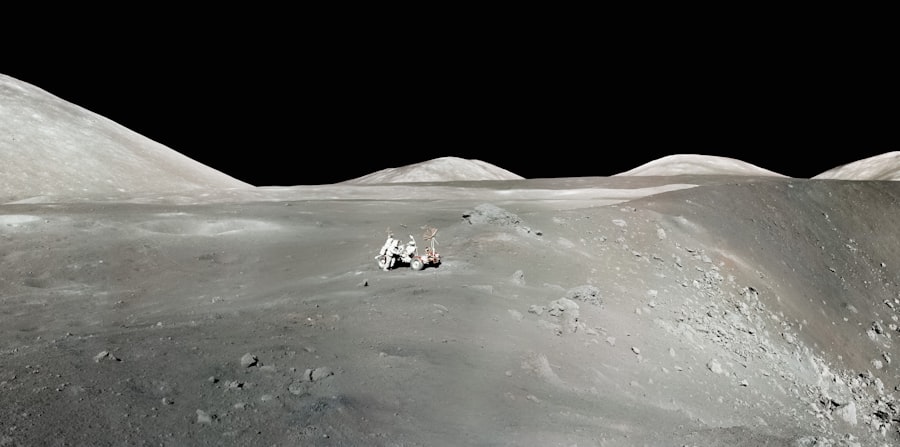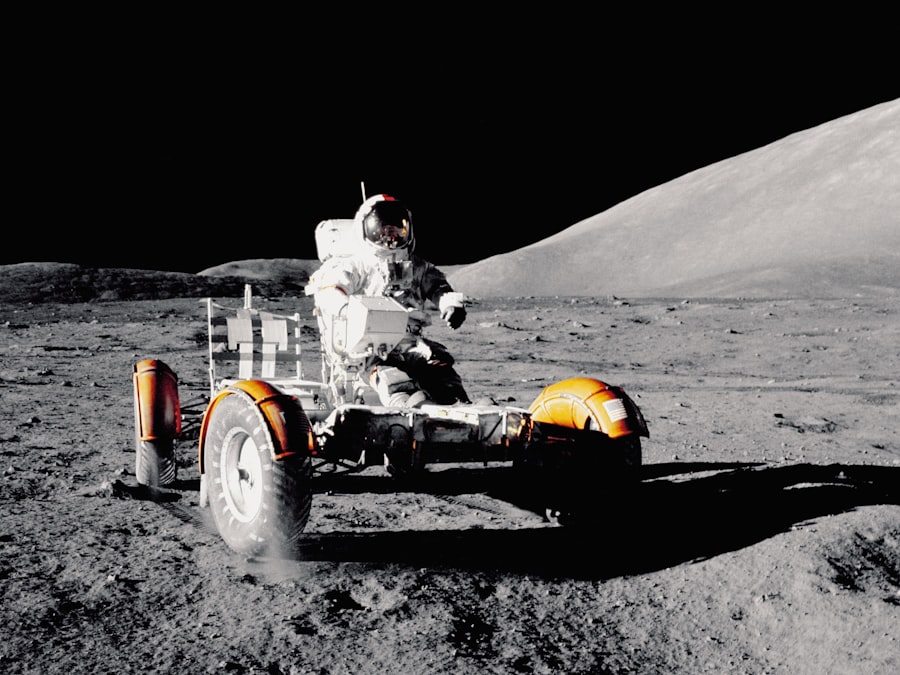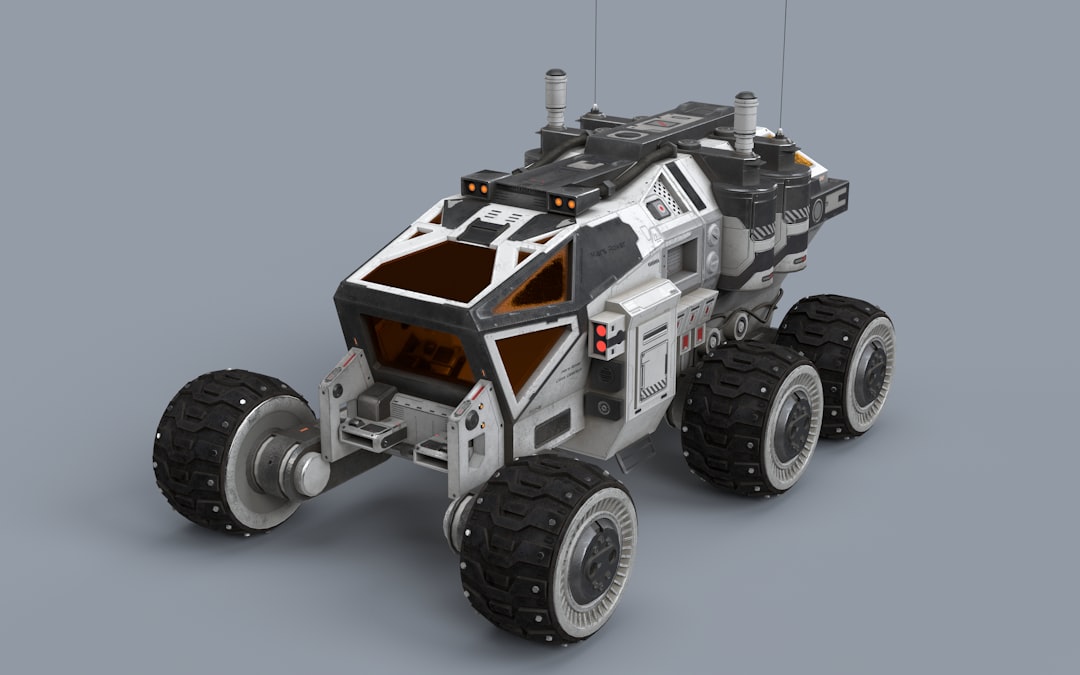The exploration of the Moon has long captivated humanity’s imagination, serving as a symbol of our quest for knowledge and discovery. As space agencies and private enterprises set their sights on lunar missions, the integration of autonomous systems has emerged as a pivotal component in these endeavors. Autonomous systems, which can operate independently or with minimal human intervention, promise to enhance the efficiency and safety of lunar operations.
By leveraging advanced technologies such as robotics, artificial intelligence, and machine learning, these systems are poised to revolutionize how humans interact with the lunar environment. The Moon presents a unique set of challenges that necessitate the use of autonomous systems. With its harsh terrain, extreme temperatures, and limited communication capabilities, the lunar surface is not conducive to traditional human-operated missions.
Autonomous systems can navigate these obstacles, performing tasks ranging from scientific research to resource extraction without the constant oversight of human operators. As humanity prepares for a new era of lunar exploration, understanding the role and potential of these systems becomes essential for successful missions.
Key Takeaways
- Autonomous systems play a crucial role in lunar operations by reducing human intervention and enabling efficient exploration.
- Advantages of using autonomous systems in lunar operations include increased productivity, reduced risk to human life, and the ability to operate in harsh environments.
- Challenges and limitations of autonomous systems on the moon include communication delays, limited power supply, and the need for advanced navigation systems.
- Current applications of autonomous systems in lunar operations include rovers, landers, and drones for exploration, resource extraction, and scientific research.
- Future developments and innovations in autonomous lunar systems may involve advanced AI, robotics, and 3D printing technologies to enable long-term human presence on the moon.
The Role of Autonomous Systems in Lunar Exploration
Autonomous systems play a crucial role in various aspects of lunar exploration, from initial reconnaissance to long-term habitation. These systems can be deployed to conduct surveys of the lunar surface, mapping out potential landing sites and identifying areas rich in resources. Equipped with advanced sensors and imaging technology, autonomous rovers and drones can gather data that would be time-consuming and risky for human crews to collect.
This capability allows mission planners to make informed decisions about where to focus their efforts. Moreover, autonomous systems can facilitate the construction of lunar habitats and infrastructure. Robotic systems can be programmed to assemble structures using local materials, reducing the need for transporting heavy equipment from Earth.
This not only saves costs but also minimizes the environmental impact of lunar operations.
Advantages of Using Autonomous Systems in Lunar Operations

The advantages of employing autonomous systems in lunar operations are manifold. One of the most significant benefits is the ability to operate in environments that are inhospitable to humans. The Moon’s surface is characterized by extreme temperatures, radiation exposure, and a lack of atmosphere, making it a challenging environment for human life.
Autonomous systems can endure these conditions without the need for life support systems, allowing them to perform tasks continuously and efficiently. Additionally, autonomous systems can enhance mission safety by reducing the risks associated with human involvement in hazardous situations. For instance, robotic rovers can explore areas with potential geological instability or toxic materials without endangering human lives.
This capability not only protects astronauts but also allows for more extensive exploration of the lunar surface. Furthermore, autonomous systems can operate around the clock, increasing productivity and accelerating mission timelines.
Challenges and Limitations of Autonomous Systems on the Moon
| Challenges and Limitations of Autonomous Systems on the Moon |
|---|
| 1. Communication Delays |
| 2. Limited Power Supply |
| 3. Harsh Lunar Environment |
| 4. Navigation and Mapping |
| 5. Maintenance and Repairs |
| 6. Software Reliability |
Despite their numerous advantages, autonomous systems face several challenges and limitations when deployed on the Moon. One primary concern is the reliability of these systems in such an unpredictable environment. The Moon’s surface is marked by dust, craters, and varying terrain that can hinder navigation and operation.
Ensuring that autonomous systems can adapt to these conditions is crucial for their success. Another significant challenge is communication latency between Earth and the Moon. The distance between the two celestial bodies results in a delay that can complicate real-time control and monitoring of autonomous systems.
This latency necessitates that these systems be equipped with advanced decision-making capabilities to operate effectively without immediate human input. Developing algorithms that allow for autonomous decision-making in uncertain environments remains a critical area of research.
Current Applications of Autonomous Systems in Lunar Operations
Currently, several space agencies and private companies are actively developing and deploying autonomous systems for lunar operations. NASA’s Artemis program aims to return humans to the Moon by 2024, and it includes plans for using autonomous rovers to scout landing sites and conduct preliminary research. These rovers will be equipped with advanced sensors to analyze soil samples and assess potential resources such as water ice.
In addition to NASA’s efforts, private companies like SpaceX and Blue Origin are also exploring the use of autonomous systems for lunar missions. SpaceX’s Starship is designed to transport cargo and crew to the Moon autonomously, while Blue Origin’s Blue Moon lander aims to deliver payloads without direct human control. These initiatives highlight a growing trend toward incorporating autonomous technology into lunar exploration, paving the way for more ambitious missions in the future.
Future Developments and Innovations in Autonomous Lunar Systems

As technology continues to advance, the future of autonomous systems in lunar operations looks promising. Innovations in artificial intelligence and machine learning are expected to enhance the capabilities of these systems significantly. For instance, future autonomous rovers may be equipped with advanced perception algorithms that allow them to recognize and respond to dynamic environmental changes in real-time.
Moreover, advancements in energy storage and power generation will enable autonomous systems to operate longer and more efficiently on the lunar surface. Solar power technology is already being explored as a means of providing energy for these systems, allowing them to recharge during the lunar day when sunlight is abundant. As research progresses, it is likely that new energy solutions will emerge, further extending the operational lifespan of autonomous systems on the Moon.
The Integration of Artificial Intelligence in Lunar Operations
Artificial intelligence (AI) is set to play a transformative role in enhancing the functionality of autonomous systems used in lunar operations. By integrating AI algorithms into these systems, they can process vast amounts of data collected from their surroundings, enabling them to make informed decisions autonomously. This capability is particularly valuable in scenarios where real-time human intervention is not feasible due to communication delays.
AI can also improve navigation and obstacle avoidance for autonomous rovers and drones operating on the lunar surface. By utilizing machine learning techniques, these systems can learn from their experiences and adapt their behavior based on previous encounters with obstacles or hazards. This adaptability will be crucial for ensuring safe and efficient operations as they traverse the unpredictable terrain of the Moon.
Safety and Reliability of Autonomous Systems in Lunar Environments
Ensuring the safety and reliability of autonomous systems in lunar environments is paramount for successful missions. Rigorous testing and validation processes must be implemented to assess how these systems perform under various conditions encountered on the Moon’s surface. This includes simulating extreme temperatures, radiation exposure, and challenging terrain during development phases.
Moreover, redundancy measures should be incorporated into the design of autonomous systems to mitigate potential failures. For instance, having backup navigation systems or alternative power sources can enhance reliability during critical operations. Continuous monitoring and diagnostics will also be essential for identifying issues before they escalate into significant problems during missions.
Environmental Impact of Autonomous Systems on the Moon
The deployment of autonomous systems on the Moon raises important questions about their environmental impact. While these technologies offer numerous benefits for exploration and resource utilization, it is essential to consider their potential effects on the lunar ecosystem. The Moon’s surface is fragile, and any disturbance caused by robotic operations could have lasting consequences.
To minimize environmental impact, mission planners must prioritize sustainable practices when designing autonomous systems. This includes using materials that are less likely to create debris or pollution on the lunar surface. Additionally, careful planning of operational routes can help avoid sensitive areas that may harbor unique geological features or resources.
Collaboration and Partnerships in Advancing Lunar Operations with Autonomous Systems
The advancement of autonomous systems for lunar operations relies heavily on collaboration between various stakeholders, including government space agencies, private companies, and academic institutions. By pooling resources and expertise, these entities can accelerate research and development efforts while sharing knowledge about best practices in deploying autonomous technologies. International partnerships are also crucial for fostering innovation in lunar exploration.
Collaborative missions involving multiple countries can leverage diverse technological capabilities while promoting peaceful cooperation in space endeavors. Such partnerships not only enhance mission success but also contribute to building a global framework for responsible exploration of celestial bodies.
Ethical and Legal Considerations for the Use of Autonomous Systems on the Moon
As humanity ventures further into space with autonomous systems, ethical and legal considerations must be addressed comprehensively. Questions surrounding accountability arise when autonomous systems operate independently; determining who is responsible for their actions becomes complex when human oversight is minimal or absent. Additionally, issues related to resource utilization on the Moon must be carefully navigated to prevent conflicts over ownership or exploitation rights among nations or private entities.
Establishing clear legal frameworks governing lunar operations will be essential for ensuring that exploration efforts are conducted responsibly while respecting international agreements such as the Outer Space Treaty. In conclusion, autonomous systems hold immense potential for transforming lunar operations by enhancing efficiency, safety, and sustainability. However, addressing challenges related to reliability, environmental impact, collaboration, and ethical considerations will be crucial as humanity embarks on this new chapter of exploration beyond Earth.
As technology continues to evolve, so too will our understanding of how best to utilize these innovative tools in our quest to explore the cosmos.
These systems are designed to perform tasks on the Moon’s surface with minimal human intervention, enhancing the efficiency and safety of lunar missions. A related article that delves into the intricacies of these technologies can be found on Real Lore and Order. This article provides insights into the current advancements and future prospects of autonomous lunar systems, highlighting their potential to revolutionize space exploration. For more detailed information, you can read the full article by visiting Real Lore and Order.
WATCH THIS! 🚀 Why The Moon Is The Next Battlefield: The Geopolitics of Cislunar Space
FAQs
What are autonomous systems for lunar operations?
Autonomous systems for lunar operations are technologies and systems designed to operate independently on the lunar surface without direct human intervention.
What are the benefits of developing autonomous systems for lunar operations?
Developing autonomous systems for lunar operations can increase efficiency, reduce the need for constant human oversight, and enable the exploration and utilization of the lunar surface in a more sustainable and cost-effective manner.
What are some examples of autonomous systems for lunar operations?
Examples of autonomous systems for lunar operations include autonomous rovers, landers, and drones, as well as systems for resource extraction, habitat construction, and power generation.
What are the challenges in developing autonomous systems for lunar operations?
Challenges in developing autonomous systems for lunar operations include the need for robust and reliable communication and navigation systems, as well as the ability to operate in the harsh lunar environment, including extreme temperatures, low gravity, and the presence of lunar dust.
How are autonomous systems for lunar operations being developed?
Autonomous systems for lunar operations are being developed through a combination of research, testing, and collaboration between government space agencies, private companies, and academic institutions. This includes the use of advanced sensors, artificial intelligence, and machine learning algorithms.
